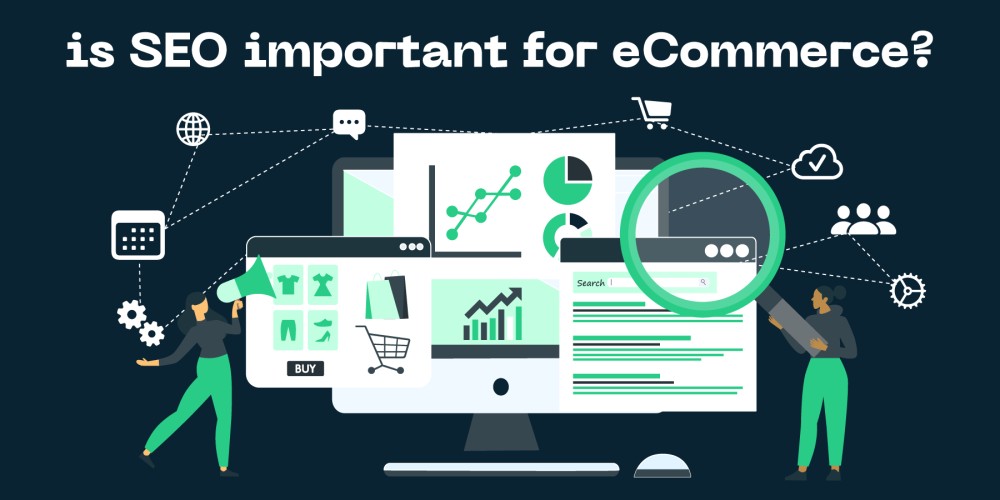SEO Product Descriptions: 7 Proven Formulas for Descriptions

Key Takeaways
- Strategic SEO product descriptions are essential growth assets, driving both organic traffic and conversion rates in today's competitive eCommerce landscape.
- Effective descriptions focus on customer outcomes, translating features into clear benefits that create emotional and practical appeal.
- Structure and clarity matter. Bullet points, concise language, and unique content enhance both user experience and search engine performance.
- Consistency and refresh cycles are critical. Brands that regularly audit and optimize their product descriptions maintain a lasting competitive edge.
In today's eCommerce environment, product descriptions have evolved from simple sales copy into critical growth assets. A well-optimized description is no longer just about informing a customer — it's about winning a click, securing a sale, and reinforcing your brand authority across search engines.
SEO-optimized product descriptions directly impact two major growth levers: organic traffic and conversion rates. Strategic keyword integration drives qualified visitors to your site, while clear, compelling language turns browsers into buyers. In a market where acquisition costs continue to rise and customer attention spans shrink, mastering SEO product descriptions is not optional — it's operational.
In this blog, we’ll break down 7 proven formulas you can use to transform your product descriptions into powerful drivers of both visibility and revenue. Whether you're looking to refresh an existing catalog or build new listings from scratch, these practical frameworks will help you consistently create descriptions that rank, resonate, and convert.
1. Strategic Keyword Placement
Keywords are the foundation of product page visibility. Without them, even the best-designed pages can remain invisible to search engines — and to your customers. Strategic keyword placement ensures that your products surface when and where buyers are actively searching.
But the key isn’t just using keywords. It’s using them strategically.
Best practices for keyword research and integration:
- Prioritize intent-based keywords. Focus on terms that indicate a strong purchase intent, not just traffic volume.
- Use long-tail variations. These drive more qualified traffic and face less competition.
- Natural integration is non-negotiable. Embed primary and secondary keywords organically into product titles, descriptions, meta descriptions, and alt text — without disrupting readability.
- Avoid keyword stuffing. Google's algorithms now penalize over-optimization. Prioritize flow, clarity, and user experience over keyword density.
Done right, strategic keyword placement positions your products at the intersection of discoverability and desirability — exactly where you need to be to scale.
Pro tip: Use our free product description generator to get keyword-rich and high-converting product descriptions.
2. Unique and Descriptive Titles
Your product title is one of the most influential SEO and conversion assets you have. It’s the first thing search engines index — and the first thing potential buyers see. A well-crafted title improves your rankings, boosts click-through rates, and sets immediate expectations for the customer.
How to create effective product titles:
- Lead with the primary keyword. Keep it natural, but front-load where possible.
- Include key attributes. Brand, product type, model, color, size — whatever matters most to buying decisions.
- Stay concise. Aim for 50–60 characters to avoid truncation in search results.
- Differentiate each product. Avoid boilerplate copy. Every title should be unique to avoid cannibalizing your own SEO performance.
A title isn’t just a label. It’s a sales pitch and SEO signal rolled into one — and getting it right is non-negotiable if you want to win the search results page.
3. Persuasive Meta Descriptions
While meta descriptions don't directly influence your search rankings, they heavily impact click-through rates (CTR) — and higher CTR signals can, over time, indirectly boost your SEO performance. Think of meta descriptions as the first pitch: they either convince users to click... or to keep scrolling.
Crafting meta descriptions that balance clarity, keywords, and persuasion:
- Summarize the value. Focus on the product’s main benefit in 150–160 characters.
- Incorporate primary keywords naturally. It improves relevancy for searchers — and signals alignment to search engines.
- Use actionable language. Phrases like “Discover,” “Shop now,” “Get yours today” drive higher engagement.
- Stay customer-centric. Speak directly to the user’s needs, wants, or problems — not just product specs.
Done right, your meta descriptions won't just fill a technical requirement. They'll pull qualified buyers straight into your product pages, ready to purchase.
Pro tip: Use our free meta description generator to get keyword-rich and high-converting product descriptions.
4. Integrating Customer Reviews and User-Generated Content (UGC)
In today’s trust-driven economy, customer reviews and UGC aren't just marketing assets — they’re powerful SEO tools and critical social proof. Search engines favor fresh, authentic content, and buyers trust real voices over brand promises.
How to incorporate real customer language into product descriptions:
- Feature key review snippets. Highlight short, genuine quotes that mention product benefits or emotional outcomes.
- Mirror customer phrasing. Use the same language your buyers naturally use — it aligns better with real search queries.
- Update descriptions periodically. Integrate newer reviews or testimonials to keep product pages dynamic and continuously relevant.
- Leverage FAQ-style insights. Common customer questions and answers can be subtly built into the description for additional SEO lift.
When UGC is integrated thoughtfully, your product descriptions stop sounding like marketing copy — and start sounding like real-world proof your next customer can trust.
5. Focusing on Benefits, Not Just Features
Features describe what a product is. Benefits show why it matters — and that's what moves the customer to act.
In today's market, simply listing specifications is no longer enough. Buyers are time-strapped and solution-driven. They aren’t just buying a product — they’re buying a result, an experience, or a feeling of progress.
Translating technical specs into emotional and practical value:
- Start with the feature. Identify the technical aspect (e.g., waterproof material).
- Ask: So what? What does that feature allow the customer to achieve or feel? (e.g., Stay dry and comfortable in any weather.)
- Focus on transformation. Move from product attributes to real-world improvements in the customer’s life.
- Use benefit-led phrasing. Lead with the end result, then reinforce with the feature as proof.
When you lead with benefits and support them with features, your product descriptions shift from sounding technical — to feeling personal, urgent, and irresistible.
6. Bullet Points for Enhanced Readability
Today’s online shopper doesn’t read — they scan. In a world of shrinking attention spans, bullet points are a tactical advantage: they break information into digestible, high-impact fragments that speed up decision-making.
Structuring product benefits and technical specs in bullet points:
- Lead with strongest selling points first. Prioritize the benefits or features that matter most to your customer’s buying criteria.
- Keep each point concise. Aim for 5–10 words per bullet — enough to convey value without overwhelming.
- Mix benefits and key specs. Highlight emotional triggers (benefits) alongside practical facts (features) to appeal to both logic and emotion.
- Maintain visual consistency. Use similar phrasing and length across points for smoother readability.
Well-crafted bullet points don't just clean up your product pages — they actively guide buyers toward faster, more confident conversions.
7. Concise, Unique, and High-Quality Content
In SEO — and in commerce — quality beats quantity every time. Your product descriptions need to be sharp, distinctive, and highly informative, without overwhelming the buyer or confusing search engines.
Optimal length for SEO product descriptions:
- Target 100–300 words. This range gives enough space to optimize for keywords, deliver meaningful benefits, and guide purchase decisions without bloating the page.
- Adapt based on product complexity. Higher-end or technical products may need longer descriptions, but even then, clarity and relevance must come first.
Avoiding duplicate content penalties:
- Every product page must be unique. Copy-pasting across SKUs damages your SEO authority and forces search engines to pick "winners" — sometimes not in your favor.
- Differentiate similar products. Focus on subtle distinctions (size, use case, design features) to create fresh, indexable content for each SKU.
- Update stale descriptions regularly. Google values freshness. Treat your product pages as dynamic assets, not static set-and-forget listings.
How to balance brevity with informativeness:
- Lead with impact. Open with the strongest emotional or functional benefit.
- Structure logically. Move from benefits to features to credibility signals (e.g., reviews or guarantees).
- Cut the fluff. Every sentence must earn its place by answering: Does this help the customer say "yes"?
The best product descriptions respect the buyer’s time, reward the search engine’s crawl, and strengthen your brand’s authority — all in a few tight, persuasive paragraphs.
Frequently Asked Questions
1. Why are SEO-optimized product descriptions important for eCommerce growth?
SEO-optimized descriptions improve your product page visibility in search engines and drive higher conversion rates by making it easier for customers to understand the value of your products.
2. How long should an ideal product description be for SEO?
Aim for 100–300 words per product description — long enough to convey value and integrate keywords, but short enough to keep the reader engaged.
3. Can I reuse product descriptions across multiple similar SKUs?
No. Duplicate content can damage your SEO performance. Each product description should be unique, highlighting differences in size, use case, or features.
4. What’s the difference between highlighting features vs. benefits?
Features describe what the product is; benefits explain why it matters to the customer — focusing on outcomes, improvements, or problem-solving.
5. How often should I update my product descriptions?
Ideally, you should audit and refresh key product pages every 6–12 months, or anytime you launch new versions, gather new customer reviews, or notice performance declines.
6. Should keywords be included in product titles and meta descriptions?
Yes. Strategic keyword integration in titles, descriptions, and meta fields increases your chances of ranking higher for relevant searches — but it must sound natural and customer-focused.
7. How do customer reviews and UGC help with SEO?
Reviews add fresh, keyword-rich, and authentic content to your product pages, improving rankings, engagement metrics, and buyer trust signals.
8. Is it better to write long, detailed descriptions or short, scannable ones?
Balance is key. Provide enough detail to inform and persuade, but structure it for fast scanning — use bullet points, clear benefits, and emotional triggers.
Summary
In an increasingly competitive eCommerce landscape, product descriptions are no longer just “supporting copy” — they are strategic assets.
Brands that consistently execute on the fundamentals — strategic keywords, clear titles, persuasive meta tags, integrated customer voices, benefit-led messaging, scannable formatting, and concise originality — create a tangible edge in both organic visibility and conversion performance.
These seven formulas aren’t theory — they’re proven frameworks used by brands that dominate their categories. Mastering them doesn’t just make your products easier to find. It makes them harder to ignore.


